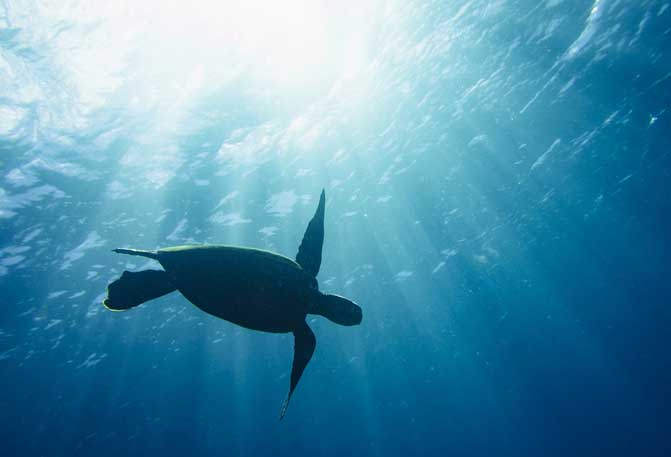 You panic when even a few drops of water fall on your laptop. Everyone knows that water and electronics don’t “mix.” That’s why it seems so ironic that most of the Internet’s “hard” infrastructure lies underwater on the ocean floor.
You panic when even a few drops of water fall on your laptop. Everyone knows that water and electronics don’t “mix.” That’s why it seems so ironic that most of the Internet’s “hard” infrastructure lies underwater on the ocean floor.
Virtually all global data travels through millions of miles of submarine fiber optic cables beneath the ocean’s surface. More than 350 subsea cable lines stretch from the U.S. West Coast to the East Coast, with many more being deployed to connect countries around the world.
Installing submarine fiber optic cables deep on the ocean floor is time consuming and expensive. While special ships deploy the cable, ocean divers repair and maintain the network. And even with thick, protective jackets, there are many ways to damage a cable. Some destructive forces include ship anchors, commercial fishing equipment, earthquakes, hurricanes and even sinister interference.
HOW UNDERSEA CABLES ARE LAID
Laying undersea cables requires the combined efforts of explorers, navigators, and engineers.
Explorers must understand the ocean floor in order to identify the best route for laying the cable. They use sonar technology to map out the terrain and locate any potential obstacles that may impede the cable’s progress. Navigators are responsible for ensuring that the cable is laid in a straight line and that it follows the planned route. Engineers must design and build the cable, as well as ensure its integrity during installation.
Once the cable is laid, it must be tested for performance and reliability. This is done by sending a signal through the cable and measuring its speed and accuracy. If any problems are detected, they must be addressed before the cable can be put into service.
I SPY WITH MY LITTLE EYE
For years, NATO forces and our military have spotted Russian submarines and ships lurking around near the sites of key intercontinental cables. The U.S. and our allies worry about Russia’s interest in these submarine fiber optic cables that carry most of the world’s data, e-mails and texts. Just as troubling, these cables transmit $10 trillion in financial transactions each day. Is Russia interested in cutting or tapping the cables? Does it want us to worry that it might? Or is there a more innocent explanation? Whatever it might be, Russia isn’t talking.
Enemies have threatened undersea cables before. During World War II and the Cold War, our foes targeted Allied copper underwater cables and wires. More recently, British and American intelligence agencies eavesdropped on submarine fiber optic cables, according to documents released by Edward Snowden, a former NSA contractor.
TAKING A JUMP FORWARD
Until recently, service providers banded together to install and maintain underwater cable networks. In this arrangement, each provider owns part of the data transmitted through the cables.
However, tech companies like Facebook, Google and Microsoft are now deploying their own subsea cable networks for exclusively private use. Virtually anyone can easily identify these network locations on public maps. Cutting one cable might have a limited impact. However, damaging several at the same time or at choke points could create a major outage.
Not to change subjects, but this might be a good time to backup your inbox on a hard drive in a very dry place. Like most types of infrastructure, we only notice when it breaks.
FREQUENTLY ASKED QUESTIONS
How thick are undersea cables?
- Modern submarine fiber optic cables are typically between 0.8 and 1.2 inches thick. They are made up of multiple layers of protective material, such as Kevlar, around a single glass fiber core. The outermost layer is usually a polyethylene coating to protect the cable from the environment.
Do the cables really rest on the ocean floor’s surface?
- Yes, cables extend all the way down. Cables are buried under the seabed near the shore for protection, which explains why you don’t see them when you go to the beach.
How many kilometers of cable are there?
- We estimate that nearly 1.4 million kilometers of submarine cables will be in service by early 2023.
reference: AI vs.TeleGeography: The Submarine Cable Showdown
Tags: fiber, Fiber Optic Cable Articles | OFS Optics, submarine cables
